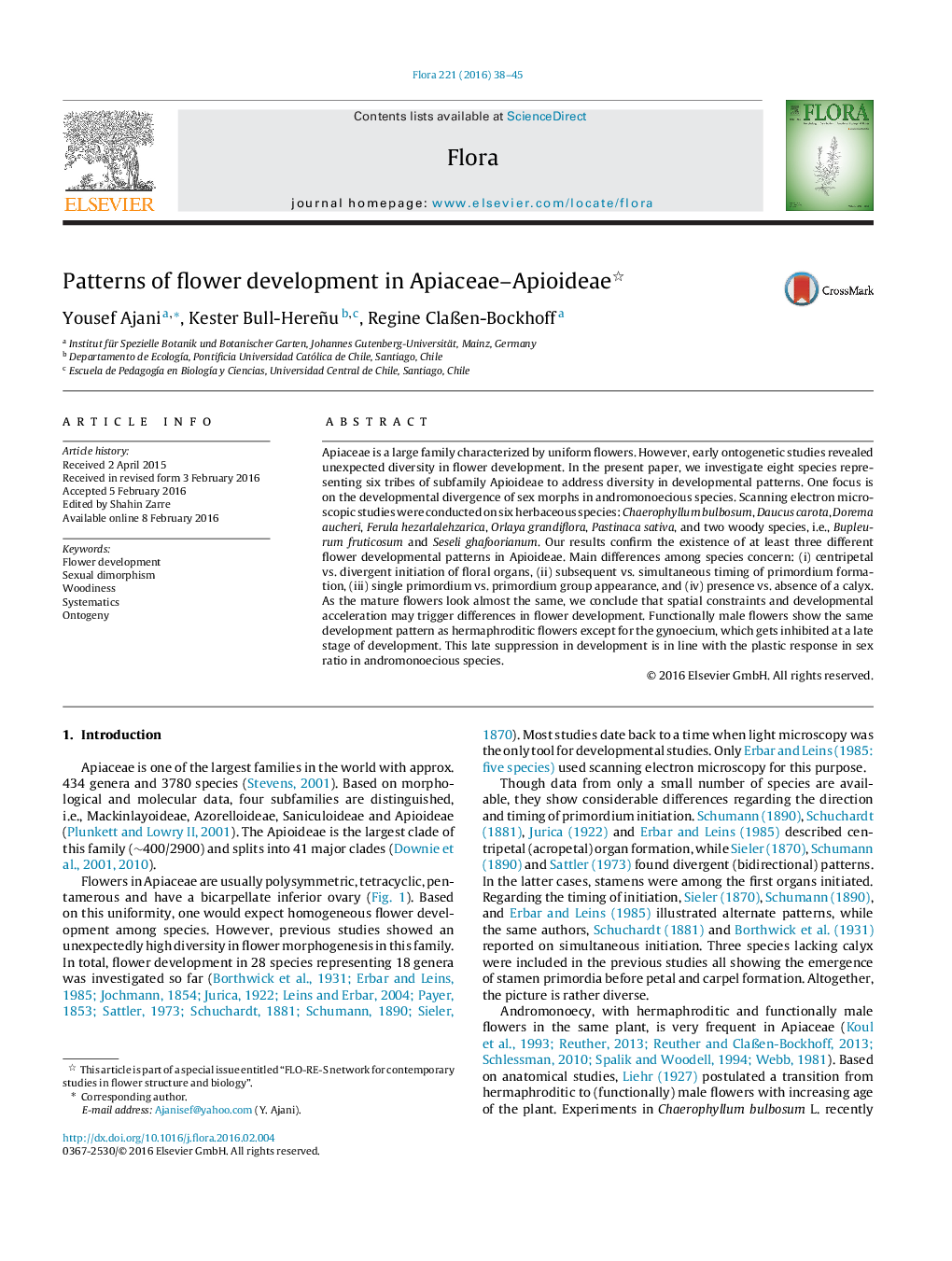| Article ID | Journal | Published Year | Pages | File Type |
|---|---|---|---|---|
| 2179356 | Flora - Morphology, Distribution, Functional Ecology of Plants | 2016 | 8 Pages |
•Flower development is unexpectedly diverse.•Main differences concern timing and direction of floral organ initiation.•Male flowers in andromonoecious species show a late inhibition of the gynoecium
Apiaceae is a large family characterized by uniform flowers. However, early ontogenetic studies revealed unexpected diversity in flower development. In the present paper, we investigate eight species representing six tribes of subfamily Apioideae to address diversity in developmental patterns. One focus is on the developmental divergence of sex morphs in andromonoecious species. Scanning electron microscopic studies were conducted on six herbaceous species: Chaerophyllum bulbosum, Daucus carota, Dorema aucheri, Ferula hezarlalehzarica, Orlaya grandiflora, Pastinaca sativa, and two woody species, i.e., Bupleurum fruticosum and Seseli ghafoorianum. Our results confirm the existence of at least three different flower developmental patterns in Apioideae. Main differences among species concern: (i) centripetal vs. divergent initiation of floral organs, (ii) subsequent vs. simultaneous timing of primordium formation, (iii) single primordium vs. primordium group appearance, and (iv) presence vs. absence of a calyx. As the mature flowers look almost the same, we conclude that spatial constraints and developmental acceleration may trigger differences in flower development. Functionally male flowers show the same development pattern as hermaphroditic flowers except for the gynoecium, which gets inhibited at a late stage of development. This late suppression in development is in line with the plastic response in sex ratio in andromonoecious species.
